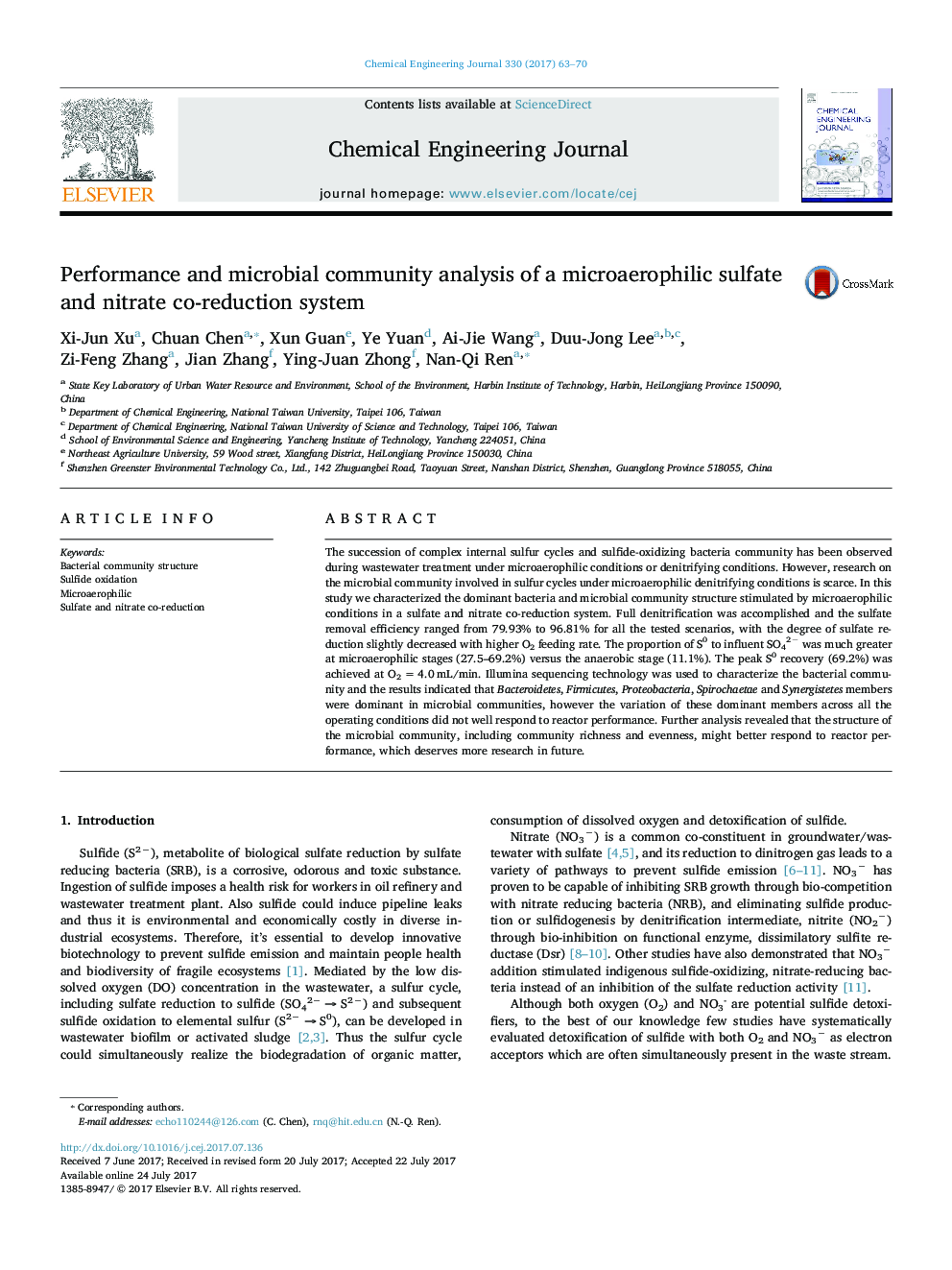| Article ID | Journal | Published Year | Pages | File Type |
|---|---|---|---|---|
| 4762865 | Chemical Engineering Journal | 2017 | 8 Pages |
Abstract
The succession of complex internal sulfur cycles and sulfide-oxidizing bacteria community has been observed during wastewater treatment under microaerophilic conditions or denitrifying conditions. However, research on the microbial community involved in sulfur cycles under microaerophilic denitrifying conditions is scarce. In this study we characterized the dominant bacteria and microbial community structure stimulated by microaerophilic conditions in a sulfate and nitrate co-reduction system. Full denitrification was accomplished and the sulfate removal efficiency ranged from 79.93% to 96.81% for all the tested scenarios, with the degree of sulfate reduction slightly decreased with higher O2 feeding rate. The proportion of S0 to influent SO42â was much greater at microaerophilic stages (27.5-69.2%) versus the anaerobic stage (11.1%). The peak S0 recovery (69.2%) was achieved at O2Â =Â 4.0Â mL/min. Illumina sequencing technology was used to characterize the bacterial community and the results indicated that Bacteroidetes, Firmicutes, Proteobacteria, Spirochaetae and Synergistetes members were dominant in microbial communities, however the variation of these dominant members across all the operating conditions did not well respond to reactor performance. Further analysis revealed that the structure of the microbial community, including community richness and evenness, might better respond to reactor performance, which deserves more research in future.
Related Topics
Physical Sciences and Engineering
Chemical Engineering
Chemical Engineering (General)
Authors
Xi-Jun Xu, Chuan Chen, Xun Guan, Ye Yuan, Ai-Jie Wang, Duu-Jong Lee, Zi-Feng Zhang, Jian Zhang, Ying-Juan Zhong, Nan-Qi Ren,
